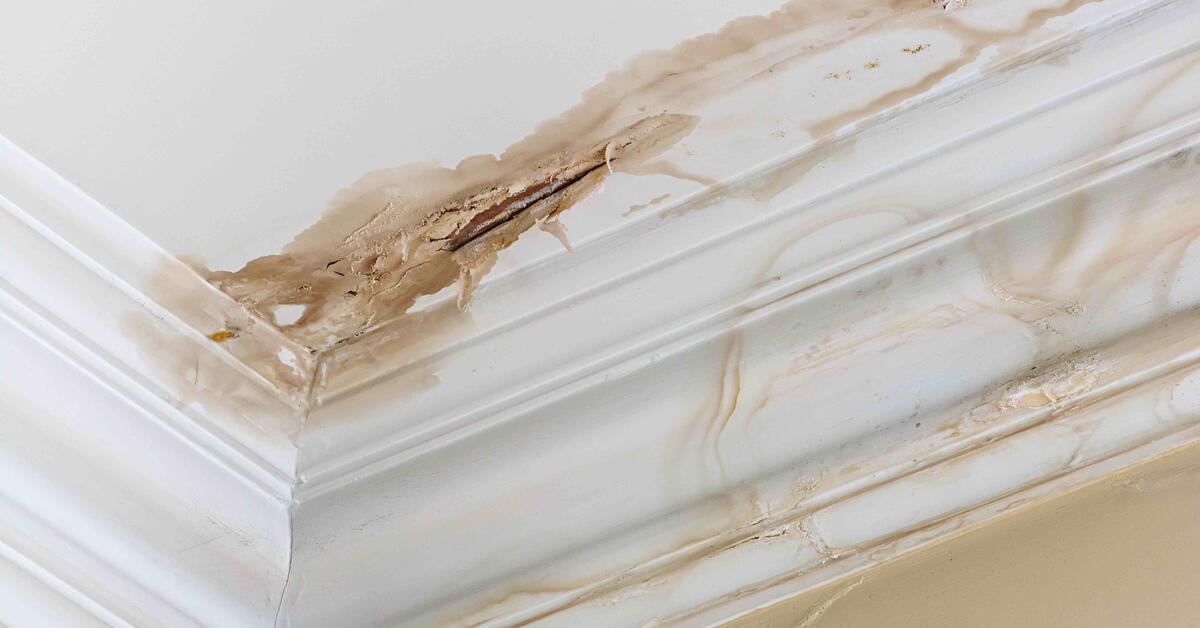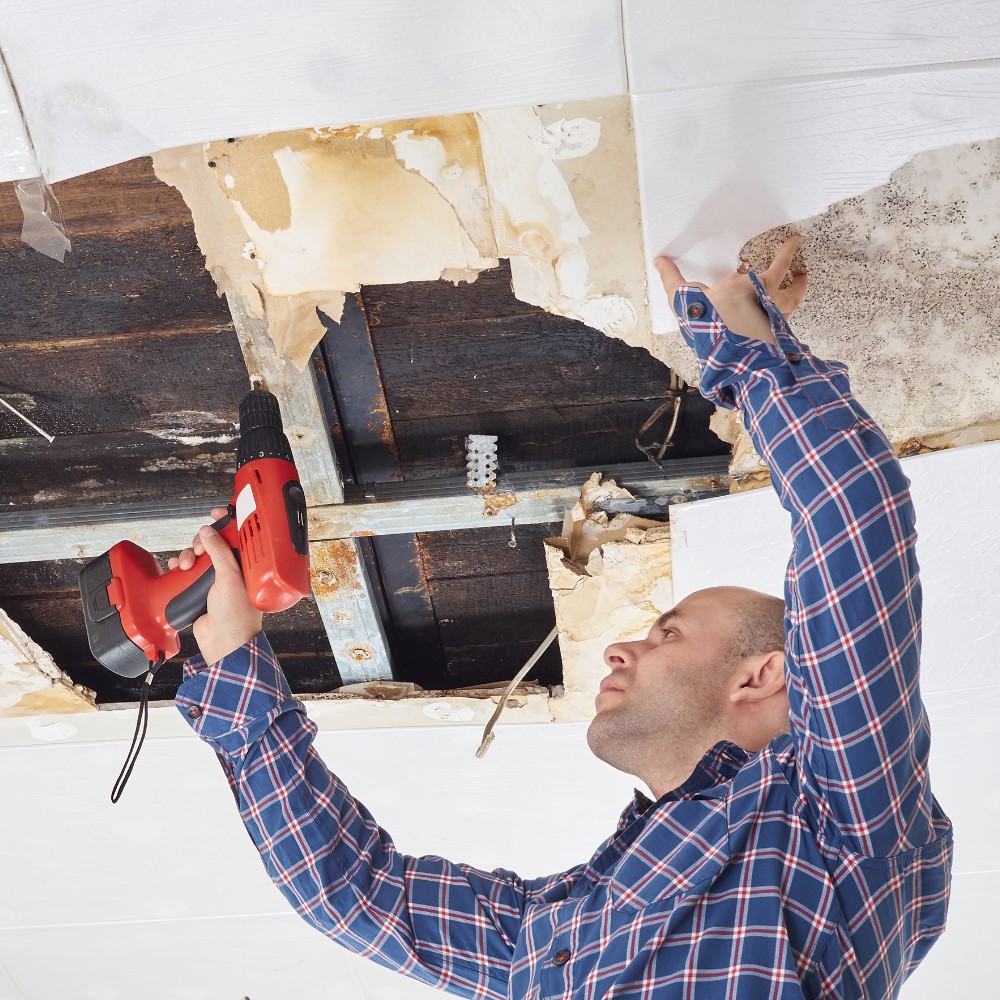Emergency Water Damage Restoration to Restore Your Property Quickly
Emergency Water Damage Restoration to Restore Your Property Quickly
Blog Article
The Refine of Water Damages Cleanup: Guaranteeing Your Home Is Restored Properly
Water damage can be a daunting challenge for house owners, demanding a structured and precise cleanup process to recover safety and performance. damage restoration services. Following this, efficient water removal methods play a critical role in alleviating further harm.
Examining the Damages
Upon uncovering water damages, the initial step is to completely assess the extent of the impact. This initial analysis is essential, as it helps figure out the needed actions for efficient clean-up and restoration. Begin by inspecting the influenced locations, consisting of walls, ceilings, floors, and individual possessions, to identify the source of the water intrusion, whether from flooding, leakages, or condensation.
Recording the damage is vital for both insurance policy claims and planning restoration initiatives - damage restoration services. Usage pictures and written notes to record the seriousness of the damage, keeping in mind any damaged structural aspects and materials. Pay special interest to areas that may not be right away noticeable, such as behind walls and under carpetings, as hidden dampness can bring about more issues, consisting of mold development
Additionally, evaluate the timeline of the water direct exposure. Inevitably, a thorough evaluation lays the groundwork for a successful water damage clean-up process, ensuring that all impacted areas are attended to successfully and thoroughly.
Water Extraction Methods

Professionals typically employ completely submersible pumps for bigger volumes of water, which can rapidly minimize flooding in basements or other affected locations. For smaller sized quantities, wet/dry vacuums are commonly made use of to remove residual moisture from rugs and hard surface areas. Additionally, utilizing portable extractors enables for targeted elimination in confined areas or locations with fragile materials.
In instances of infected water, such as sewer or floodwater, progressed extraction strategies might include using biohazard devices to guarantee safety and conformity with wellness regulations. High-powered removal tools are essential in minimizing water retention in structural products, which can cause mold development and structural wear and tear if not addressed without delay.
Eventually, the effectiveness of water removal methods plays a critical duty in the general success of the water damages clean-up procedure, laying the foundation for subsequent reconstruction efforts.
Drying and Dehumidification
As soon as standing water has actually been effectively extracted, the next crucial stage in the water damages cleanup procedure is drying and dehumidification. This step is vital to stop additional damages and mold growth, which can occur within 24 to 48 hours in moist atmospheres.
To attain effective drying out, specialized equipment such as industrial-grade air moving companies and dehumidifiers is employed. Air movers distribute air across wet surface areas, boosting evaporation rates, while dehumidifiers decrease moisture levels in the air, promoting a conducive setting for drying. The combination of these investigate this site devices guarantees that wetness is extracted from walls, floors, and home furnishings, allowing them to dry completely.
It is necessary to check the drying out procedure very closely. Experts typically make use of moisture meters to assess the moisture content in different products, ensuring that all affected areas reach acceptable dryness levels. This precise method helps to avoid hidden moisture pockets that could lead to structural damages or unhealthy mold growth.

Cleaning and Sanitizing
After the drying out and dehumidification stage is complete, the next vital action in water damages clean-up is cleansing and disinfecting the impacted areas. This procedure is critical to avoid the growth of mold, microorganisms, and other pathogens that prosper in damp environments.
The cleansing phase typically entails eliminating any type of debris, dust, and pollutants from surface areas utilizing specialized cleansing agents. For tough surfaces, a mix of soap and water or industrial cleansing products is frequently used. Soft materials, such as furniture and carpets, may require extra substantial cleansing techniques, consisting of vapor cleansing or deep extraction strategies, to ensure thorough hygiene.

Disinfecting follows cleaning, using EPA-approved anti-bacterials to remove damaging microbes. This action is important, specifically in areas that may have come into call with floodwaters or sewer, as these resources can pose serious health and wellness threats.
Additionally, it is very important to attend to see here now any kind of staying smells, which might require making use of odor neutralizers or sophisticated methods like ozone therapy. Correct cleansing and disinfecting not just bring back the safety and security and health of your home yet also prepared for successful remediation and repairs in succeeding phases of the water damage cleaning process.
Restoration and Repair Services

As soon as the analysis is complete, remediation efforts can start. Additionally, floor covering may require similar attention, depending on the level of water exposure.
It is vital to engage skilled restoration professionals throughout this procedure, as they possess the know-how to handle complex fixings efficiently. They can aid minimize potential future issues, such as mold and mildew development or architectural instability, thus making sure a secure and habitable living setting. Eventually, effective reconstruction and repair services recover the home's integrity and improve its general value.
Final Thought
Finally, the procedure of water damages clean-up is essential for restoring a home to its pre-damage problem. Each phase, from evaluating the damage to applying efficient water removal strategies, followed by complete drying out, sanitizing, and required repairs, plays a vital duty in ensuring safety and security and compliance with building criteria. Efficient implementation of these steps not just minimizes instant damage but likewise enhances the long-lasting integrity and value of the residential or commercial property.
Water damage can be a complicated challenge for homeowners, necessitating a structured and precise cleanup procedure to restore safety and security and functionality. Eventually, an extensive analysis lays the groundwork for an why not try here effective water damage clean-up procedure, ensuring that all impacted areas are dealt with properly and extensively.
Efficient water removal methods are necessary in reducing damages and stopping additional problems following a water intrusion occasion.In verdict, the process of water damages cleanup is essential for bring back a home to its pre-damage condition. Each phase, from analyzing the damages to implementing efficient water extraction strategies, followed by detailed drying, disinfecting, and necessary repairs, plays an important role in guaranteeing security and compliance with building criteria.
Report this page